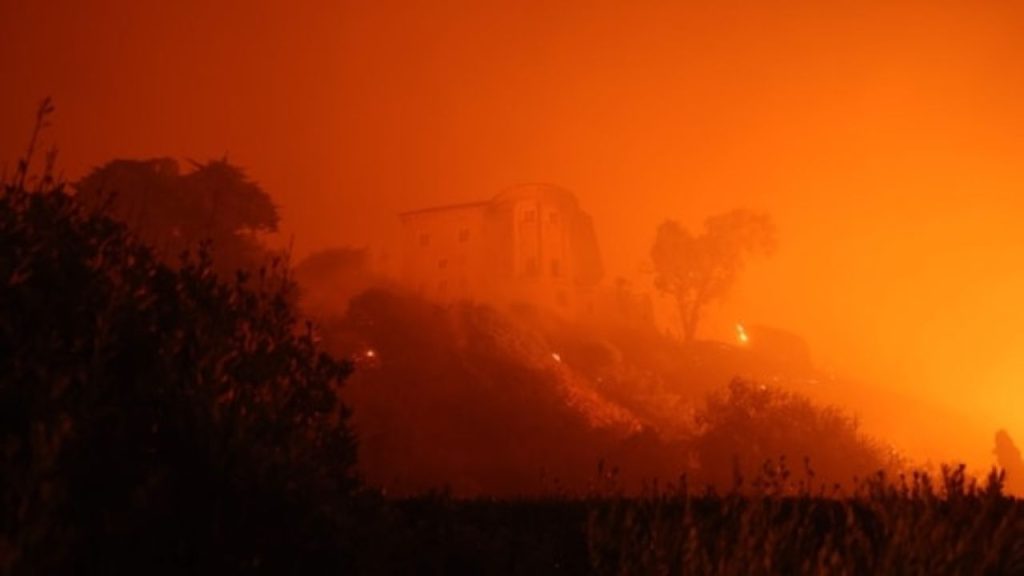
In a recent report, experts have warned that a wildfire in Los Angeles may have caused damages worth an astounding $57 billion. This catastrophic event could potentially be ranked as one of the United States’ most expensive natural disasters. Wildfires in California are not a new phenomenon, but this particular blaze is projected to have a staggering economic impact, highlighting the increasing severity of such events in the region. The report brings to light not only the financial toll of these wildfires but also their long-term social, environmental, and economic consequences.
The Rising Frequency and Intensity of Wildfires in California
California has always been prone to wildfires due to its vast dry landscapes, high winds, and fluctuating temperatures. In recent years, however, wildfires have become more frequent and more intense. Experts attribute this trend to a combination of factors, including climate change, prolonged droughts, and mismanagement of land. Wildfires in the state have already caused billions in damages over the past few decades, but the Los Angeles wildfire could be one of the most destructive.
The fire season in California typically peaks in late summer and fall, with dry conditions providing ample fuel for wildfires to spread rapidly. In the case of the Los Angeles wildfire, high winds and extreme temperatures exacerbated the situation, causing the fire to spread uncontrollably. Firefighters and emergency services were stretched thin as they battled the blaze, while evacuation orders impacted tens of thousands of residents. The damage was compounded by the fact that the fire tore through both urban areas and wilderness, affecting homes, businesses, infrastructure, and natural landscapes.
The Economic Impact: A $57 Billion Price Tag
The financial toll of the wildfire on Los Angeles is expected to reach up to $57 billion, according to the report. This figure includes a wide range of costs, from direct damage to property and infrastructure to long-term economic consequences such as lost productivity and tourism revenue. The report estimates that billions of dollars in property damage occurred, with thousands of homes destroyed or severely damaged. Businesses, particularly those located in affected areas, also suffered significant losses.
In addition to the destruction of physical assets, the wildfire’s economic impact includes the costs of firefighting efforts, which can run into the millions. Firefighting crews, equipment, and air support, such as helicopters and airplanes, are crucial in containing wildfires, but these operations are extremely costly. The financial burden also extends to the healthcare system, as hospitals and emergency services are often overwhelmed by the number of people injured or affected by the smoke.
The long-term economic effects are also significant. Many businesses will face extended periods of downtime as they work to rebuild or relocate. Residents who have lost their homes will require temporary housing and other forms of assistance. Furthermore, tourism, a major industry in Los Angeles, may suffer due to the damage to iconic locations and the general disruption caused by the fires.
The Environmental Consequences
Wildfires have devastating effects on the environment. The Los Angeles wildfire is no exception. The fire likely destroyed vast areas of natural habitat, including forests, grasslands, and wildlife reserves. These areas are critical not only for the biodiversity they support but also for the broader ecological balance. The loss of plant life and animal habitats can take years, if not decades, to recover. Furthermore, wildfires can result in soil erosion, which, in turn, affects water quality and increases the risk of flooding in the future.
Additionally, the smoke from wildfires can have far-reaching effects on air quality, not just in Los Angeles but across large swaths of California. Wildfire smoke is a major source of air pollution, containing harmful particles that can cause respiratory problems, particularly for vulnerable populations such as children, the elderly, and those with pre-existing health conditions. The health impacts of smoke exposure can last long after the fire is contained, with communities facing increased healthcare costs and a decline in overall public health.
The Social Toll: Displacement and Trauma
The social implications of the wildfire are equally devastating. Thousands of residents were forced to evacuate their homes, leaving behind their possessions and lives in the process. Many are now facing uncertainty about whether they will be able to rebuild or recover from the loss. In addition to the material losses, individuals affected by the fire may experience long-term emotional trauma as they cope with the loss of their homes and communities.
For displaced residents, finding new housing or rebuilding their homes can be a lengthy and stressful process. Insurance claims may take months to process, and in some cases, homeowners may find that their insurance policies do not fully cover the extent of the damage. Renters who lost their homes are also faced with finding temporary accommodations, often in an already tight housing market.
The social fabric of affected communities is also strained. Families and neighbors are separated as some are forced to relocate while others are left behind. The mental health of residents can be significantly impacted, with many experiencing anxiety, depression, and post-traumatic stress disorder (PTSD) due to the severity of the event.
The Role of Climate Change
Climate change has been identified as one of the primary contributors to the increasing intensity and frequency of wildfires in California. Rising temperatures and prolonged droughts create the perfect conditions for wildfires to spread. Scientists have warned that as global temperatures continue to rise, the frequency of extreme weather events, including wildfires, will increase.
The Los Angeles wildfire is a stark reminder of the urgent need to address climate change and take steps to mitigate its effects. While wildfires are a natural part of the ecosystem, their current scale and frequency are unprecedented. Addressing the root causes of climate change, such as reducing greenhouse gas emissions, transitioning to renewable energy sources, and implementing sustainable land management practices, is essential to reducing the impact of future wildfires.
The Path Forward: Prevention and Preparedness
While wildfires cannot be completely prevented, there are steps that can be taken to minimize their impact and increase preparedness. For one, improving land management practices, such as controlled burns and thinning of vegetation, can help reduce the fuel available for wildfires. Additionally, ensuring that homes and businesses are built with fire-resistant materials and maintaining defensible space around properties can improve the chances of survival during a wildfire.
Increasing investment in firefighting resources and infrastructure is also essential. The growing threat of wildfires requires a coordinated response that includes not only local and state fire departments but also federal agencies. Better training, more resources, and advanced technology can help improve the effectiveness of firefighting efforts.
Public education campaigns can also play a critical role in increasing awareness about fire safety and preparedness. Residents living in fire-prone areas must be educated on evacuation procedures, fire prevention measures, and how to protect their homes. Moreover, early warning systems can help communities respond more quickly to the threat of wildfires, saving lives and reducing property damage.
Conclusion
The $57 billion damage caused by the Los Angeles wildfire serves as a stark reminder of the increasing risks posed by climate change and natural disasters. While California has always been vulnerable to wildfires, the scale and frequency of these fires are becoming more extreme, with devastating consequences for the economy, environment, and society. As the state continues to face these challenges, it is crucial that both government and private sectors invest in prevention, preparedness, and climate change mitigation to reduce the damage caused by future wildfires. The path forward will require collaboration, innovation, and a commitment to safeguarding communities and natural resources for future generations.
